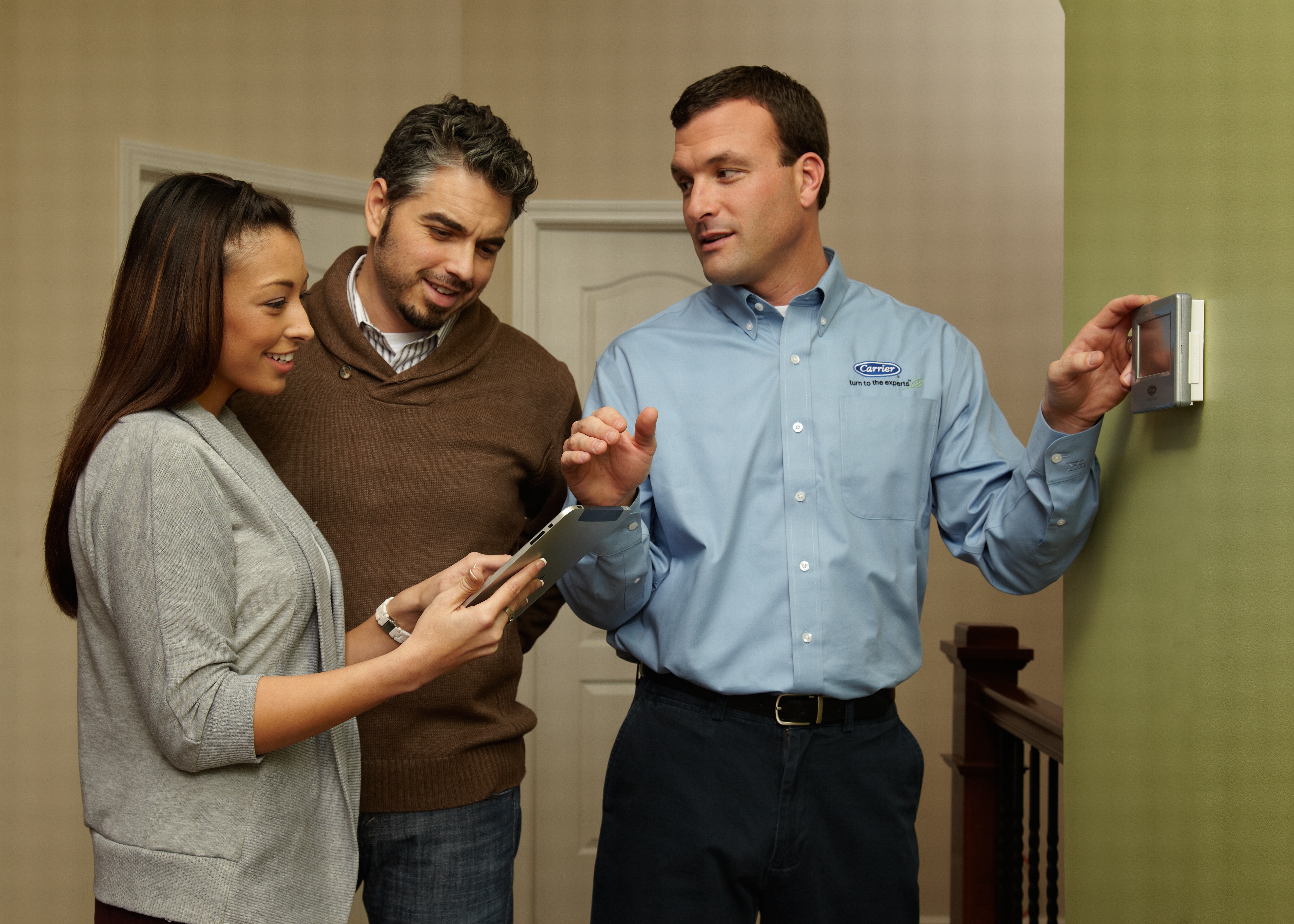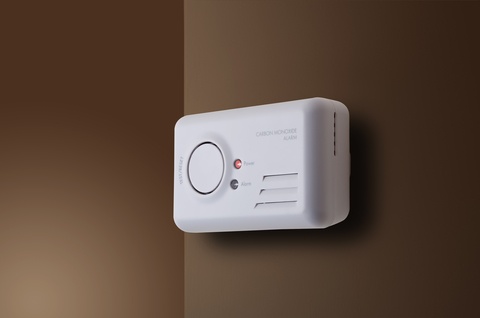There are plenty of things that can go wrong with the heating system in your Jersey Shore home. Fortunately, you don’t have to wait until they happen to spot a problem. And, you don’t have to pay a lot of money to spot them, either.
Here are 10 tips to self-inspect your heating system. They’ll help you diagnose common problems and notice warning signs before things go wrong — and get costly.
Check and change your air filter
This is common advice — we’ve written this many times ourselves. But, it bears repeating: Change the air filter on your furnace at least every three months. And, if you notice it getting full by then, consider changing it more often.
Air filters prevent dust, dirt and debris from getting into your heating system and clogging it up. The issue is, once the filter itself gets full of those bits it starts to block air flow. This prevents heat from traveling through ducts. It can also damage the heater.
Filters cost anywhere from $5 to $50 each. Just slide the old one out of its slot on your furnace and put the new one in its place.
Visually inspect your furnace
You don’t necessarily need a professional to spot a problem with a gas furnace. A quick self-inspection for a few telltale signs can go a long way.
First, look for rust or corroded side panels on the furnace itself. A little bit of rust on an old furnace is natural. But, a noticeable amount on a newer furnace could mean there’s a venting problem or other concern.
Likewise, look for orange spots or water spots around the gas furnace on the floor. Water on the floor often means a condenser leak.
If you find orange spots, there could be a hole somewhere in the system. Sometimes, this results in a carbon monoxide leak. In this case, you’ll want to call a licensed technician immediately.
Check the flames
 Both gas and oil furnaces run the risk of having soot build up in and around them. Soot is a byproduct of burning fossil fuels It’s made up of fine black particles and carbon. In large quantities, it can become toxic. You’ll want to periodically self-inspect your heating system for soot buildup.
Both gas and oil furnaces run the risk of having soot build up in and around them. Soot is a byproduct of burning fossil fuels It’s made up of fine black particles and carbon. In large quantities, it can become toxic. You’ll want to periodically self-inspect your heating system for soot buildup.
Normally, soot exits the home through the chimney or other venting path. But, if it begins to build up it can cause health problems. To check for soot buildup, take a look at the flames your furnace generates.
To do this, take the panel off your furnace and turn it on. The flames you see should turn blue. Orange or yellow flames means there is a soot buildup somewhere. You’ll need to call a professional to clean out your system.
Inspect the flue pipe
Self-inspecting a flue pipe can tell you if there is a ventilation problem in your heating system. The flue pipe essentially transports pollutants and toxins from your furnace. The pipe leads these outside so they don’t build up in your home.
A leaky flue pipe can result in a carbon monoxide leak, among other problems. To check for this, first look for soot around the furnace and venting. It looks like black ash.
If it’s building up here, there may be a clog somewhere in the pipe. You’ll need someone who can check the entire line for the problem.
Then, do a visual inspection of the pipes themselves. Look for any small holes. If you find any, you’ll want them repaired as soon as possible. We would recommend calling a professional.
Clear the way
Self-inspecting your heating system means looking around your whole house, too. Specifically, make sure the areas around your vents, furnace and any heat registers are clear. This way, warm air can flow easily and your thermostats can properly gauge the temperature.
Clean all these areas with a vacuum and brush attachment. Also, ensure there’s nothing flammable near the furnace. These steps can prevent fires.
Similarly, check the areas outside your home near outdoor components or vents. Clear out any trash, nests or plant life. These can block airflow, causing breakdowns or even fires.
Feel for hot and cold air
An oversized furnace can cause plenty of problems. These range from less comfort to less efficiency and even to a shorter life for the entire heating system. Fortunately, there are ways to self-inspect for this.
You can check for this by setting the thermostat for five degrees higher than the current indoor temperature. Then, wait for the heater to kick on. Note if it shuts off within fifteen minutes. If it does, check if the temperature rose five degrees.
If the temp went up five degrees, your heater may be oversized. It shouldn’t be able to raise the temp that much in such a short time.
However, the problem may be much simpler: A thermostat may read warmer than it should if it’s too close to a heat source. Either way, a certified HVAC technician can tell you for sure what’s causing a high reading.
Check your thermostat
 A broken thermostat, or one that’s giving false readings, can cost you extra money. In some cases, it can even contribute to a heating system breakdown. Fortunately, there’s an easy way to self-inspect your thermostat.
A broken thermostat, or one that’s giving false readings, can cost you extra money. In some cases, it can even contribute to a heating system breakdown. Fortunately, there’s an easy way to self-inspect your thermostat.
First, set the thermostat to heat the room ten degrees higher than its current temperature. Then, listen to make sure the heater turns on within a few minutes.
Finally, wait fifteen minutes and check the room's temperature with a regular thermometer. It should be at the setting you used for the test. If it’s not, or the equipment didn’t kick on, you may want to call a professional.
Check your floor vents
As we’ve seen and talked about already, anything that blocks the flow of air in your HVAC system is a problem. Part of your self-inspection should include the floor vents.
Since these vents are flush against the floor, it’s easy for small objects to fall into them. Dust, debris and pet hair can also build up inside them. All this can block the flow of air, which makes your heating system less efficient.
Use a flashlight to visually inspect these. If you see signs of buildup, use a vacuum cleaner to get them out. For larger objects, you can usually pop off the vent cover off and pick out anything you find by hand.
Test smoke and carbon monoxide detectors
T esting your detectors is an important aspect of self-inspecting your heating system. Smoke detectors, and especially carbon monoxide detectors, are an easy way you can find out there’s a problem.
esting your detectors is an important aspect of self-inspecting your heating system. Smoke detectors, and especially carbon monoxide detectors, are an easy way you can find out there’s a problem.
It’s a good idea to test your smoke detector batteries every month. Simply press the button on the detector and make sure it beeps.
Carbon monoxide detectors are especially important parts of your heating system. A colorless, odorless gas, carbon monoxide is often called a silent killer. Without a detector, you’d never know it was present in your home until you started to feel its effects.
If your furnace has a cracked heat exchanger or a leak somewhere, there’s a chance carbon monoxide is seeping into your home. High enough levels of it can be fatal. Therefore, it’s important to have working carbon monoxide detectors.
If you see any of these red flags when looking at your system, call a professional in your area to take a look! If you live in the South Jersey Shore area, you can give us a call at (609) 400-1005, or email us at info@iwantcomfortnow.com!



